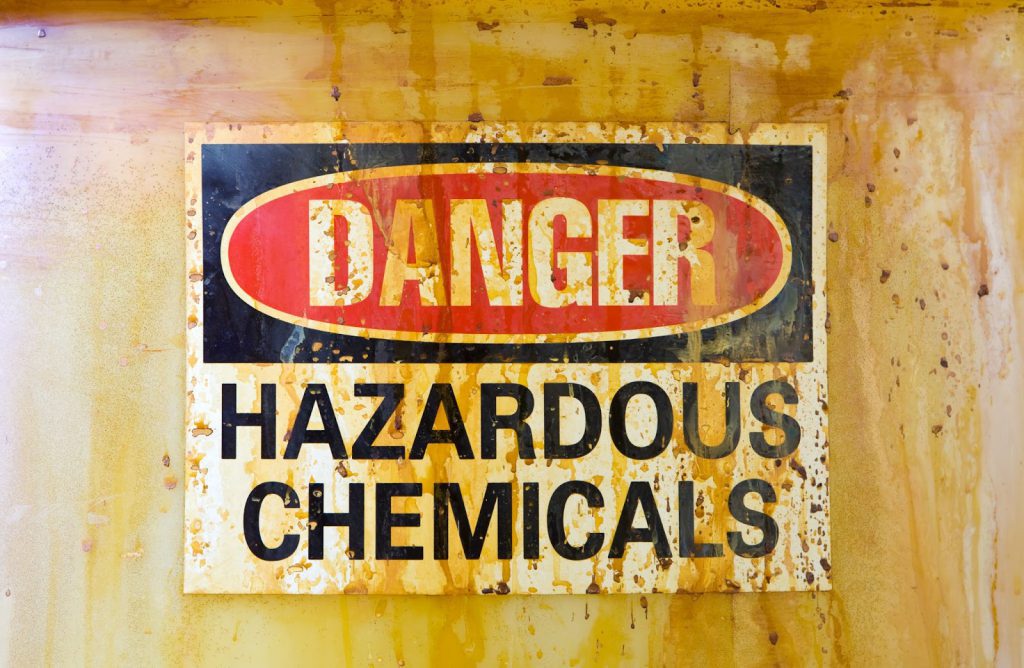
The seventh revision of the GHS is now in effect in all Australian jurisdictions except for Victoria. From 2017 up until the end of 2022, Australia was using the third revision of GHS, but a lot has changed since then.
Chemwatch adopted the GHS Revision 7 under the model WHS laws early in the transition period, and applicable changes have been live in our applications since February 2021. In December 2022 Chemwatch converted the remaining SDS that had not been updated within the transition period. This means that all Chemwatch authored SDS are classified under GHS Rev 7, and will be updated continually as WHS laws evolve.
Want to know more about what this means for you and your chemical compliance? Read on to learn what’s changed and what’s new in GHS.

The Globally Harmonised System of Classification and Labelling (GHS) is a set of model regulations and recommendations created by the UN in 2002. This system allows for the standardisation of chemicals management worldwide, ensuring that conventions are consistent.
While it’s not law, the GHS is a set of recommendations that each country can tailor to their needs. This approach is often called the GHS Building Block approach; jurisdictions can choose which sections of the GHS they wish to implement into their already-existing regulations. Each jurisdiction is responsible for the upkeep of their own GHS rules. Despite not being an enforceable legal framework, the adherence to UN model regulations such as GHS relieves much of the burden caused by otherwise discordant chemicals management practice between jurisdictions.
As of Western Australia’s adoption in March of 2022, all Australian jurisdictions (except Victoria) have adopted the GHS as their regulatory framework. While Victoria is the exception here, they do still recognise the GHS and GHS-compliant SDS in their state.

A new GHS class has been added in the form of ‘Desensitised Explosives’ (distinct from the ‘Explosives’ class found in the Australian Dangerous Goods Code). These are explosive substances which have been diluted, wetted, or dissolved to diminish their explosive properties. This gives these substances a dedicated class, rather than being categorised as something less appropriate, such as flammable solids or oxidising solids.
The table below shows the labelling elements for desensitised explosives.
| Category | Pictogram | Signal Word | Hazard Statement |
| Category 1 | Danger | Fire, blast or projection hazard; increased risk of explosion if desensitising agent is reduced | |
| Category 2 | Fire or projection hazard; increased risk of explosion if desensitising agent is reduced | ||
| Category 3 | Warning | Fire or projection hazard; increased risk of explosion if desensitising agent is reduced | |
| Category 4 | Fire hazard; increased risk of explosion if desensitising agent is reduced |
The ‘Aerosols’ hazard class has a newly added category, that being ‘Non-Flammable Aerosols’ (category 3), which will need to adhere to classification and labelling requirements. The higher class has also been renamed from ‘Flammable Aerosols’ to simply ‘Aerosols’ in light of this addition.
The table below shows the labelling elements for non-flammable aerosols.
| Category | Pictogram | Signal Word | Hazard Statement |
| Category 3 | No pictogram required | Warning | Pressurised container: May burst if heated |
‘Flammable Gas’ (category 1) has been split into two subcategories: 1A and 1B. From the revision changes, gases have been automatically placed in Category 1A unless there is evidence to support classification in Category 1B.
Category 1A contains three further subcategories, as follows:
‘Pyrophoric gas’ is defined as a flammable gas that is liable to ignite spontaneously in air at a temperature of 54°C or below. ‘Chemically unstable gas A’ has been defined as flammable gases which are chemically unstable at 20°C and atmospheric pressure. ‘Chemically unstable gas B’ is a flammable gas which is chemically unstable at greater temperatures or pressures.
The table below shows the labelling elements for flammable gases.
| Category | Pictogram | Signal Word | Hazard Statement | ||
| 1A | Flammable gas | Danger | Extremely flammable gas | ||
| Pyrophoric gas | Extremely flammable gas. May ignite spontaneously if exposed to air | ||||
| Chemically unstable gas | A | Extremely flammable gas. May react explosively even in the absence of air | |||
| B | Extremely flammable gas. May react explosively even in the absence of air at elevated pressure and/or temperature | ||||
| 1B | Flammable gas | Flammable gas | |||
Additionally, the definition of ‘hazardous chemical’ under the WHS law was clarified to ensure it captures all Category 2 eye irritants. Category 2B eye irritants are now classified as hazardous, so manufacturers and importers of these must now prepare GHS labels and SDS. Category 2B eye irritants can be categorised as Category 2 or 2A, if desired, as these overlap.
The table below shows the labelling elements for category 2/2A and 2B eye irritants.
| Category | Pictogram | Signal Word | Hazard Statement |
| Category 2/2A | Warning | Causes serious eye irritation | |
| Category 2B | No pictogram required | Warning | Causes eye irritation |
New physical hazard statements have been added to the revision to account for the changes in hazard classification. See the table below:
| Code | Physical Hazard statements | Hazard class | Hazard category |
| H206 | Fire, blast or projection hazard; increased risk of explosion if desensitizing agent is reduced | Desensitized explosives | 1 |
| H207 | Fire, or projection hazard; increased risk of explosion if desensitizing agent is reduced | Desensitized explosives | 2, 3 |
| H208 | Fire hazard; increased risk of explosion if desensitizing agent is reduced. | Desensitized explosives | 4 |
| H229 | Pressurized container: May burst if heated | Aerosols | 1, 2, 3 |
| H230 | May react explosively even in the absence of air | Flammable gases | 1A: Chemically unstable gas A |
| H231 | May react explosively even in the absence of air at elevated pressure and/or temperature | Flammable gases | 1A: Chemically unstable gas A |
| H232 | May ignite spontaneously if exposed to air | Flammable gases | 1A: pyrophoric gas |
There are some exemptions applicable to secondary labels in limited cases. For example: if the container size is too impractical to house a label, if the chemicals are produced in a workplace but are not intended for sale and are intended for immediate use.
A decanted hazardous chemical can only be considered to be “used immediately” in situations where: it is not left unattended by the person who decanted it; it is used only by a person present at the decanting process; and the container is subsequently rendered free from any hazardous chemical immediately after use, leaving the container in the condition it would be in if it had never contained the chemical.
GHS 7 has made some changes to precautionary statements to make them easier to read and understand. Updated statements are shown in the table below:
| GHS Rev. 3 | GHS Rev. 7 |
| P223: Keep away from any possible contact with water, because of violent reaction and possible flash fire | P223: Do not allow contact with water |
| P340: Remove victim to fresh air and keep at rest in a position comfortable for breathing | P340: Remove person to fresh air and keep comfortable for breathing |
| N/A (new phrase) | P364: And wash it before reuse |
Chemwatch is host to a database of over 120 million SDS which are updated continually with evolving regulation. In addition, our proprietary regulatory database, Galleria Chemica, is the largest of its kind with data from more than 7000 regulatory lists.
If you need assistance with updating your SDS or label elements, talk to the Chemwatch team today! We’re informed by over 30 years of chemical expertise and well equipped to help you with hazard identification, regulatory compliance, SDS authoring, chemical risk assessment, or inventory management. Contact us today!
Sources:
https://unece.org/ghs-rev7-2017